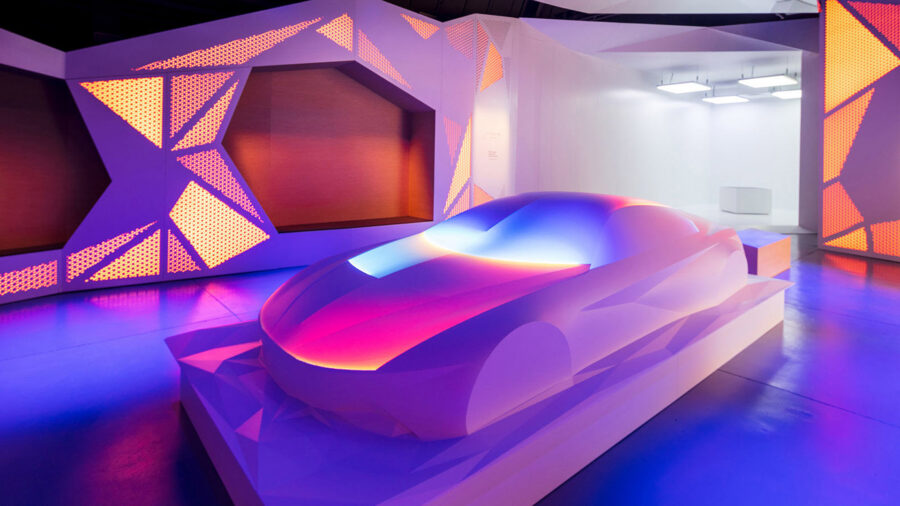Hyundai Motor Company, a prominent player in the global automotive industry, has been at the forefront of innovative car design for decades. Behind the sleek lines and cutting-edge technology of Hyundai vehicles lies a creative powerhouse – the Hyundai Car Design Studio. This article delves into the inner workings of this design studio, exploring its processes, technologies, and the creative minds that shape the future of automotive design.
The Genesis of Hyundai Design
Established in [year], Hyundai Design Center has evolved significantly from its early days. Initially focused on producing functional and economical vehicles, Hyundai recognized the importance of design in brand identity and market positioning. The company invested in creating a dedicated design studio to elevate its vehicles from mere transportation to statements of style and innovation.
Design Philosophy: Form Meets Function
At the heart of Hyundai’s design philosophy is the principle that form should always complement function. This philosophy is embodied in every aspect of the design process, from initial sketches to the final prototype. Hyundai designers strive to create vehicles that are not only aesthetically pleasing but also efficient, safe, and sustainable.
- Aesthetic Appeal: Hyundai vehicles are known for their dynamic and fluidic designs that capture attention on the road. Design elements such as the cascading grille, sleek headlights, and distinctive body contours are carefully crafted to enhance both beauty and aerodynamics.
- Functionality: Every design decision is rooted in functionality. Ergonomic interiors, intuitive control layouts, and advanced driver-assist technologies are seamlessly integrated to enhance the driving experience.
- Sustainability: With a growing emphasis on sustainability, Hyundai incorporates eco-friendly materials and manufacturing processes into its design ethos. This commitment not only reduces environmental impact but also aligns with evolving consumer preferences.
The Design Process: From Concept to Reality
The journey from a concept sketch to a production-ready vehicle is intricate and multi-faceted. Hyundai’s design process is characterized by several key stages, each crucial in refining ideas and ensuring that the final product meets both aesthetic and functional standards.
Concept Development
At the outset, designers brainstorm and sketch preliminary concepts that capture the essence of the vehicle. These concepts are inspired by market trends, consumer preferences, and Hyundai’s brand identity. Advanced digital modeling tools allow designers to create detailed 3D renderings that provide a realistic visualization of the concept.
Also Read : Innovative Technology in Hyundai Car Design
Design Refinement
Once a concept is selected, designers refine the design to optimize performance, aerodynamics, and manufacturability. Collaboration with engineers ensures that technical specifications align with design intentions without compromising safety or efficiency. This iterative process involves rigorous testing and simulation to validate design choices.
Prototyping and Testing
Prototyping is a critical phase where virtual designs are transformed into physical prototypes. Hyundai utilizes state-of-the-art prototyping facilities equipped with advanced manufacturing technologies. These prototypes undergo extensive testing for performance, durability, and safety in controlled environments and real-world conditions.
Technology and Innovation
Innovation is at the core of Hyundai’s design strategy, driving continuous improvement and differentiation in the competitive automotive landscape. The design studio leverages cutting-edge technologies to explore new possibilities and push boundaries in vehicle design.
- Virtual Reality (VR) Design: Hyundai integrates VR technology into its design process, allowing designers to immerse themselves in virtual environments and interact with digital prototypes in real-time. This enables rapid iteration and visualization of design concepts before physical prototyping.
- Artificial Intelligence (AI) in Design: AI algorithms analyze market data, consumer feedback, and design trends to generate insights that inform the design process. AI-driven design tools assist designers in making data-driven decisions that optimize design aesthetics and performance.
- Advanced Materials: Hyundai explores the use of lightweight materials, composite alloys, and sustainable fabrics to enhance vehicle performance and reduce environmental impact. These materials are rigorously tested for durability, safety, and recyclability.
Case Studies: Iconic Hyundai Designs
To illustrate Hyundai’s design prowess and innovation, let’s examine a few iconic vehicles that have left a significant mark on the automotive industry:
Hyundai Kona Electric
The Hyundai Kona Electric exemplifies Hyundai’s commitment to sustainable mobility. Its bold, sculpted exterior design is complemented by an efficient electric powertrain and advanced battery technology. The Kona Electric has garnered acclaim for its range, performance, and distinctive design language that sets it apart in the electric vehicle market.
Hyundai Tucson
The Hyundai Tucson represents a blend of futuristic design and cutting-edge technology. Its parametric grille, dynamic character lines, and innovative lighting elements redefine the compact SUV segment. The Tucson’s interior reflects Hyundai’s focus on comfort, connectivity, and intuitive design features that enhance the driving experience.
The Future of Hyundai Design
Looking ahead, Hyundai remains committed to pushing the boundaries of automotive design through innovation, sustainability, and consumer-centricity. As the automotive industry evolves, Hyundai’s design studio will continue to play a pivotal role in shaping the future of mobility.
Conclusion
The Hyundai Car Design Studio stands as a testament to Hyundai’s dedication to design excellence and innovation. By integrating advanced technologies, sustainable practices, and consumer insights into its design philosophy, Hyundai continues to redefine the automotive landscape. As consumers demand vehicles that not only perform well but also inspire and resonate on an emotional level, Hyundai’s design studio remains poised to meet these challenges and exceed expectations.
This structured article provides an in-depth look into Hyundai’s design studio, covering its philosophy, processes, technologies, and impact on the automotive industry. Each section is crafted to inform and engage readers while highlighting Hyundai’s commitment to innovation and sustainability in car design.
(source)
Originally posted 2024-07-18 07:33:52.
